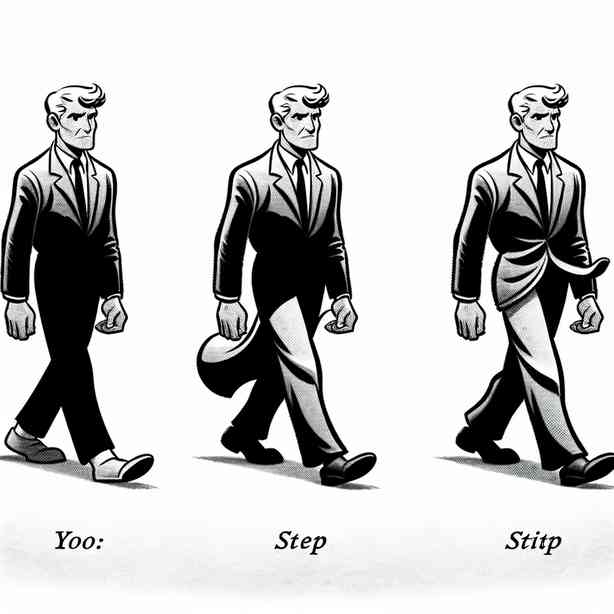
A character arc is a key element of storytelling, capturing the transformation of a character throughout the narrative. While character arcs can enrich a story, they can also fall into the trap of feeling overly familiar or cliché. This phenomenon occurs when an arc mirrors common patterns, leading to predictability and a lack of emotional engagement from the audience. Understanding this dynamic is essential for writers aiming to create compelling, unique characters that resonate deeply with their audience.
Character arcs typically follow a structure that includes a shift from one state of being to another. This change can be categorized into three main types: the positive arc, where a character grows and overcomes challenges; the negative arc, where a character deteriorates or succumbs to their flaws; and the flat arc, where a character remains fundamentally unchanged yet influences others around them. While these frameworks serve as effective storytelling tools, they can also lead to a sense of déjà vu if not executed with originality or depth.
One common issue with character arcs is the reliance on archetypes—universal symbols or themes that resonate across cultures. For instance, the “reluctant hero” or the “tragic villain” evokes clear expectations from the audience. While these characters can be relatable, they often lead to predictable outcomes. To elevate the character arc beyond triteness, writers must delve into the complexity of human motivations and emotions, crafting a multi-dimensional character whose journey is both unique and believable.
Take, for example, the journey of a character who begins as a cynical individual, embittered by personal loss or trauma. This character may initially resist the call to change, displaying traits such as mistrust, cynicism, or self-isolation. However, rather than merely following the predictable path of redemption, the writer could introduce unexpected challenges and unforeseen complications that force the character to confront their vulnerabilities in flawed yet relatable ways. By complicating the arc, the character’s transformation becomes more engaging and thought-provoking, inviting the audience to feel invested in their journey.
The setting and context of a character’s journey also play crucial roles in shaping their arc. A familiar environment, such as a small town or a dystopian future, can contribute to a sense of predictability if not handled with nuance. Introducing unique elements or cultural nuances can provide fresh perspectives on a character’s struggles, opening new avenues for growth. For instance, a character who encounters societal challenges that mirror their internal struggles can provide a rich tapestry of conflict, generating depth within their journey.
Another aspect to consider is the interaction between characters. Relationships often serve as catalysts for change, pushing a character toward growth or reinforcing their flaws. Writers should explore how these dynamics evolve throughout the story. A mentor-mentee relationship, for example, can add layers to a character arc by instilling confidence or introducing doubt. This interplay allows for a more organic evolution of the character, making the arc feel less predictable and more nuanced.
Additionally, pacing is a critical factor in shaping character arcs. A rushed transformation can lead to a lack of emotional resonance, rendering the experience superficial. Writers should allow for moments of reflection, where characters grapple with their choices and the ramifications of their actions. Such moments not only provide insight into a character’s psyche but also afford the audience the time to connect emotionally with the narrative. A gradual evolution that incorporates setbacks and victories contributes significantly to a satisfying character arc that feels earned.
It is also important to subvert expectations. Writers can achieve this by incorporating unexpected twists that challenge the character’s beliefs or force them to reassess their goals. By deviating from the anticipated trajectory, a character arc can become a source of intrigue and suspense. This subversion does not eliminate the core transformation but instead enriches it, inviting the audience to reconsider their assumptions and invest more deeply in the journey.
Another area worth exploring is the theme of identity. A character’s journey often involves a quest for self-discovery, prompting them to confront their past, beliefs, and sense of purpose. By exploring themes of identity authentically, writers can create arcs that resonate with audiences on a personal level. Characters grappling with issues such as cultural heritage, societal expectations, or internal conflicts related to their self-image can provide rich material for exploration. This depth adds layers to the arc, making it more compelling and relatable.
To further enhance the originality of a character arc, writers can draw inspiration from real-life experiences and diverse perspectives. Incorporating elements from various cultures or life challenges can yield unique character traits, motivations, and outcomes. This approach not only broadens the narrative scope but also validates the experiences of underrepresented voices, enriching the storytelling landscape with authenticity and depth.
Finally, a satisfying resolution is crucial for any character arc. This conclusion should feel earned and resonate with the themes explored throughout the narrative. Whether a character achieves their goals or embraces their flaws, the resolution is essential for providing closure and allowing the audience to reflect on the journey. A well-crafted ending can leave a lasting impression, ensuring that the character’s transformation is both poignant and thought-provoking.
In summary, the familiar character arc can easily slip into predictability and cliché if not approached with creativity and insight. Writers can break away from the mold by embracing complexity, exploring nuanced relationships, delving into unique settings, and drawing on authentic themes. By allowing characters the space to grow organically, and incorporating unexpected challenges and resolutions, writers can create character arcs that feel fresh, engaging, and deeply resonant. Ultimately, the goal is to evoke emotional investment, prompting the audience to reflect on their own experiences and engage with the universal themes of human growth and transformation.


